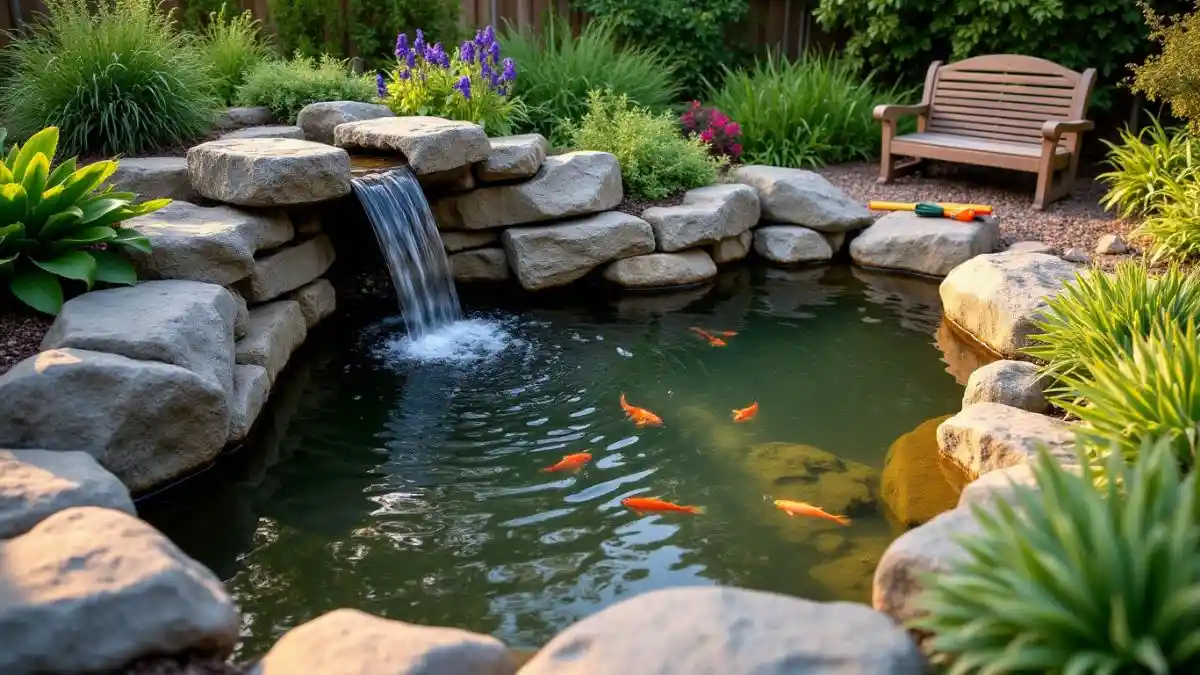Creating a small backyard pond is one of the best ways to transform your outdoor space into a serene oasis. Imagine stepping outside to enjoy the soothing sound of water, the beauty of aquatic plants, and the wildlife it attracts. Whether you’re new to gardening or a seasoned DIY enthusiast, starting your own pond is easier than you think. This comprehensive guide will walk you through the steps to design, build, and maintain your small backyard pond, complete with practical tips and ideas to get started today.
Table of Contents
Benefits of a Small Backyard Pond
Why Add a Pond to Your Backyard?
Adding a small backyard pond is not just about aesthetics—it’s about creating a space that promotes relaxation, biodiversity, and even property value. Here are a few key benefits:
- Enhance Aesthetics: A pond acts as a focal point, adding charm and sophistication to your outdoor area.
- Support Wildlife: Ponds attract beneficial creatures like birds, frogs, and pollinators, creating a mini ecosystem.
- Relaxation and Stress Relief: The gentle sounds of flowing water can help reduce stress and provide a peaceful escape.
- Increase Property Value: A well-maintained pond can boost curb appeal and make your property stand out.
By starting with a small backyard pond, you’ll enjoy these benefits without needing a large space or complicated setup.
Tip 1: Choose the Perfect Location
Why Location Matters
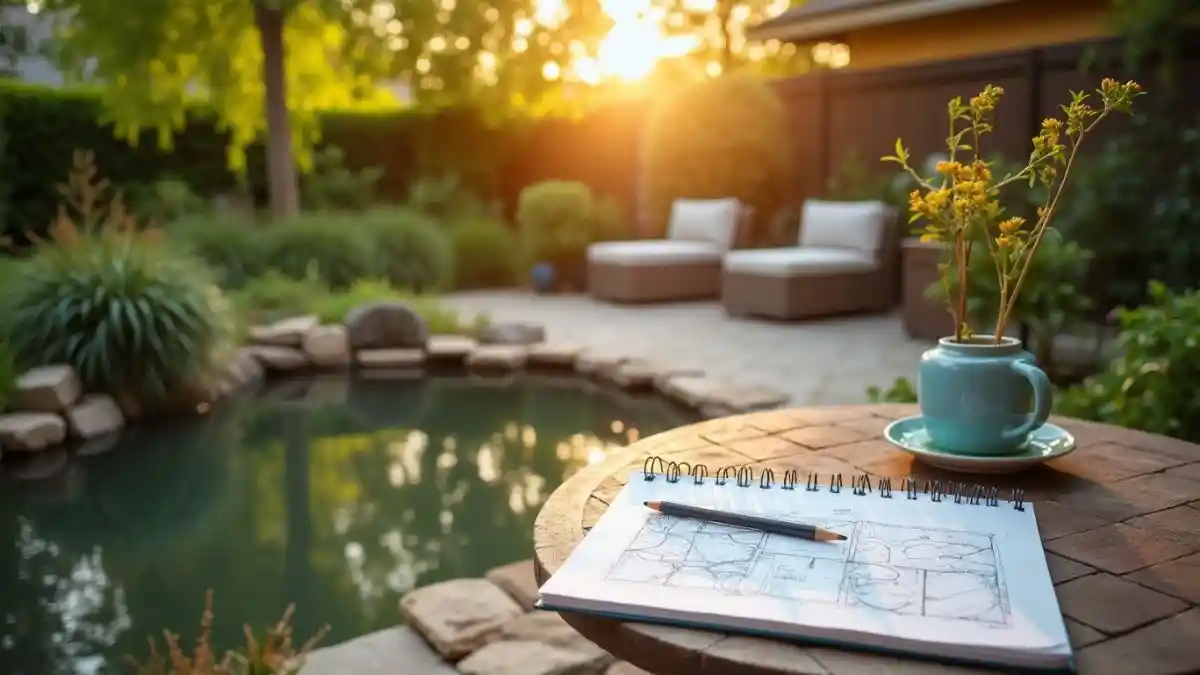
Choosing the right location is one of the most crucial steps in creating a small backyard pond. The placement will impact everything from maintenance to the health of your plants and aquatic life.
- Maximize Sunlight: Ensure your pond gets at least 6 hours of sunlight daily. This is essential for aquatic plants and the overall ecosystem.
- Avoid Large Trees: Position the pond away from trees to minimize leaf debris, which can lead to water quality issues.
- Ensure Accessibility: Place your pond in a visible, easy-to-access area for regular maintenance and enjoyment.
Practical Tips:
- Observe your yard at different times of the day to identify sunny spots.
- Use garden stakes or string to outline potential pond locations and visualize how it will look.
- Avoid areas prone to water runoff, as excess rainwater can introduce pollutants into your pond.
Example:
If you have a patio or deck, consider placing the pond nearby to enjoy the view while entertaining guests. For smaller yards, a corner location can create a cozy, enclosed feel.
Tip 2: Select the Right Pond Size and Shape
Factors to Consider
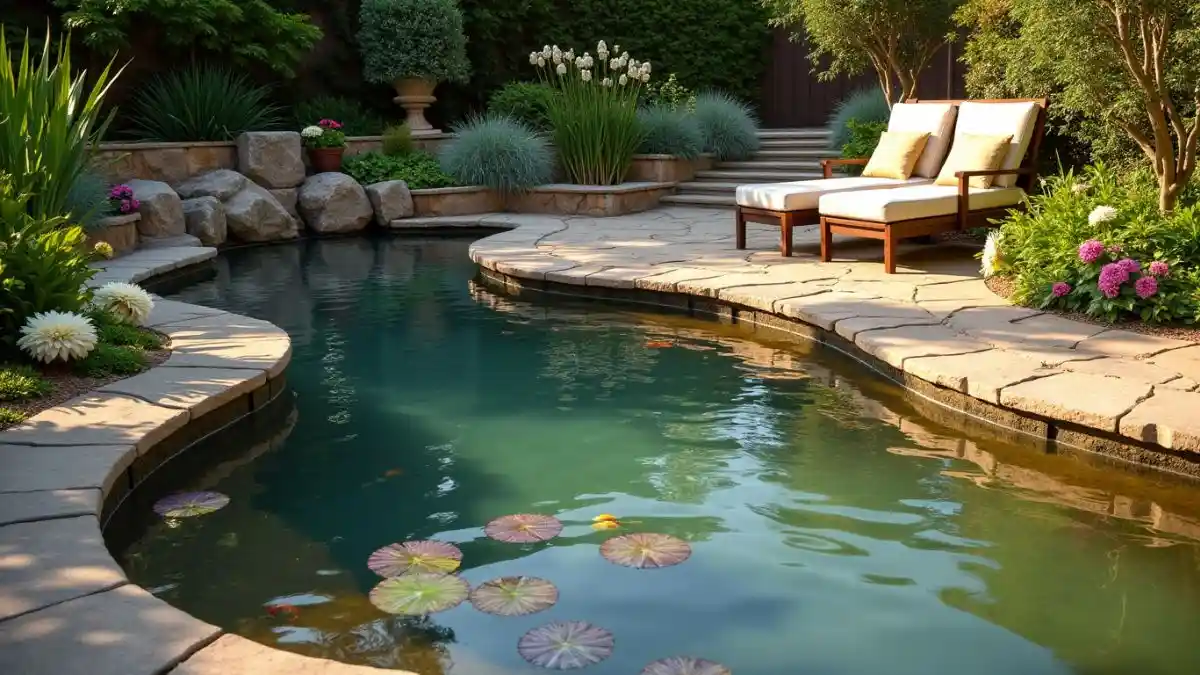
The size and shape of your pond will depend on the available space, your budget, and the intended purpose. Smaller ponds are easier to maintain but require careful planning to maximize their impact.
- Space Availability: Choose a size that complements your yard without overwhelming it. A small pond measuring 4×6 feet can provide enough room for plants and fish without dominating the space.
- Purpose: Decide if your pond will be purely decorative or also functional, such as supporting fish or growing aquatic plants.
Popular Shapes
- Round: A classic and natural look that works well with surrounding flower beds.
- Kidney-shaped: Adds visual interest and blends seamlessly with landscaping.
- Rectangular: Ideal for a modern aesthetic, especially when paired with geometric paving.
Additional Considerations:
- Use a garden hose to outline potential shapes and experiment with designs.
- For a natural appearance, avoid symmetrical shapes and incorporate gentle curves.
Example:
A kidney-shaped pond measuring 6×4 feet is perfect for compact spaces. It provides enough room for plants and small fish while blending harmoniously with the landscape.
Tip 3: Use Quality Liner and Materials
Importance of the Liner
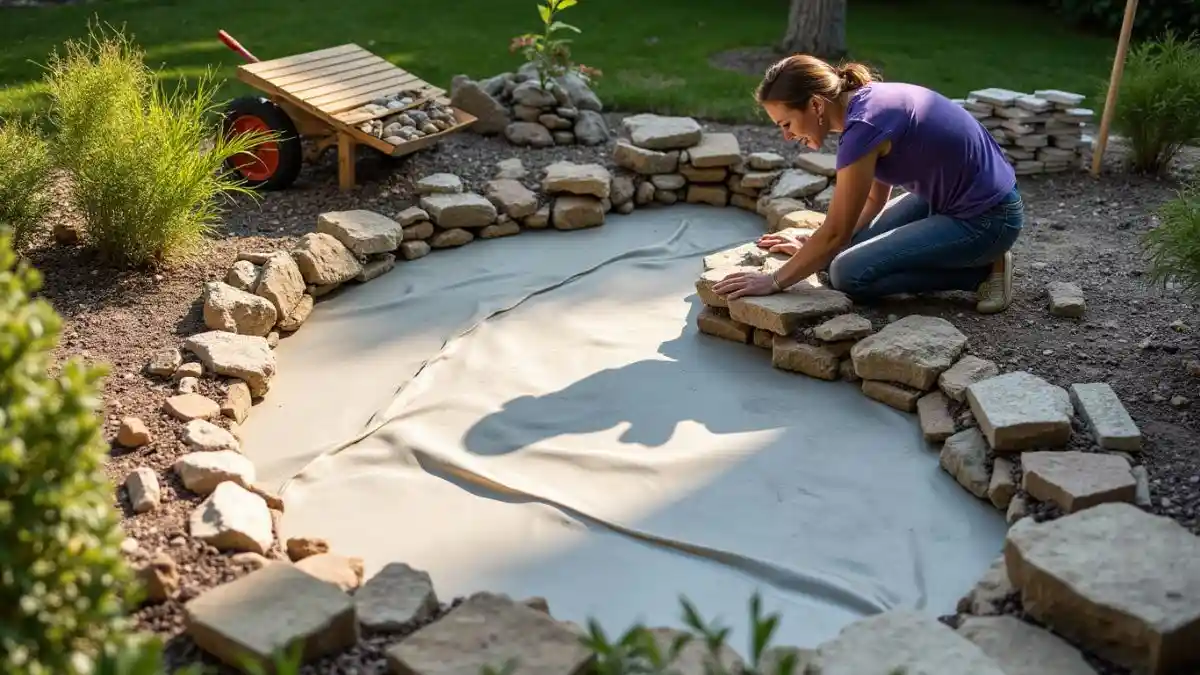
A high-quality liner is the foundation of any pond, preventing water leakage and ensuring longevity. Selecting the appropriate materials will save you both time and money over time.
- EPDM Liners: These are flexible, durable, and ideal for irregularly shaped ponds. They’re also resistant to UV rays and extreme temperatures.
- Concrete: is ideal for larger, permanent ponds, though it needs professional installation.
- Preformed Plastic Molds: These are great for beginners and come in various shapes and sizes. However, they’re less flexible in design.
Pro Tips:
- Add an underlayment fabric beneath the liner to protect it from sharp objects like rocks and roots.
- Use decorative stones or tiles to hide exposed edges of the liner for a polished look.
Additional Materials:
- Gravel and Pebbles: Line the bottom of the pond for a natural look and added stability.
- Edging Materials: Use bricks, stones, or wooden planks to create a clean border around your pond.
Example:
For a budget-friendly option, combine a preformed liner with river rocks and gravel. This creates a visually appealing pond with minimal effort.
Tip 4: Add Plants and Decor for Visual Appeal
Best Aquatic Plants for Small Ponds
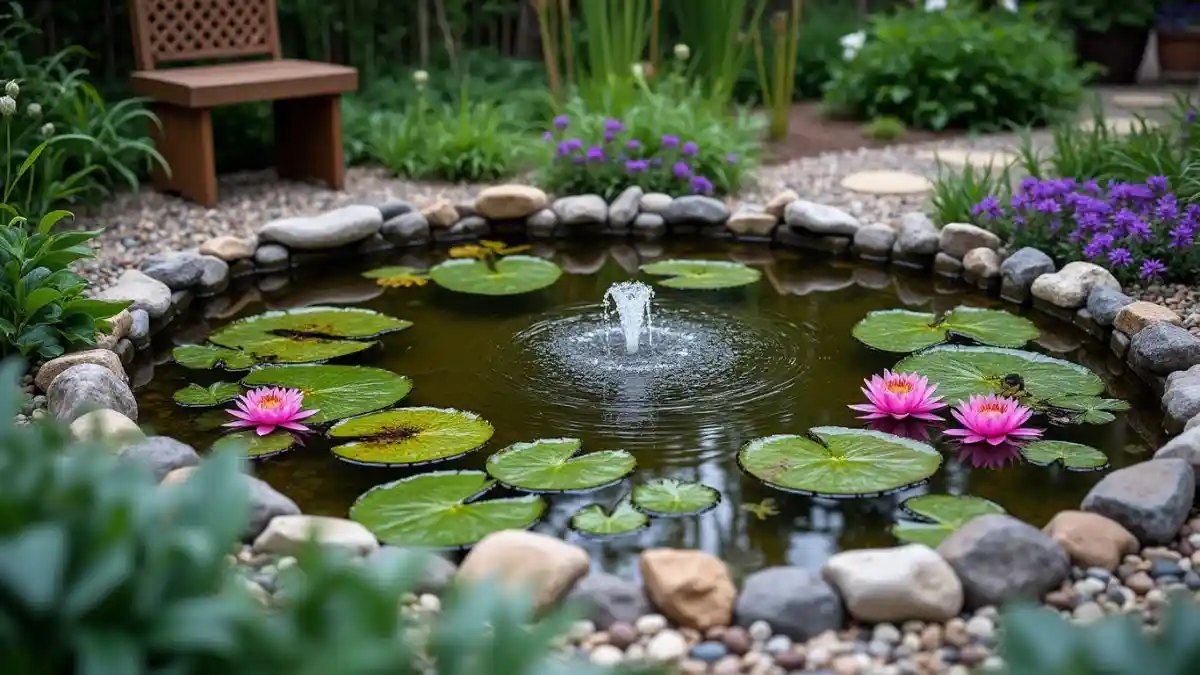
Adding plants not only enhances the beauty of your pond but also supports a healthy ecosystem. Here are some great options:
| Plant Name | Benefits | Placement |
| Water Lilies | Provides shade and oxygen | Surface |
| Hornwort | Prevents algae growth | Submerged |
| Pickerel Weed | Adds vibrant colors | Marginal zones |
Layering Plants for Maximum Impact
- Submerged Plants: These oxygenate the water and keep it clear. Examples include hornwort and anacharis.
- Floating Plants: Water hyacinths and duckweed add coverage and reduce algae.
- Marginal Plants: Place cattails and irises around the pond’s edges for height and texture.
Decorative Ideas
- Arrange stones and pebbles around the edges for a natural look.
- Install a small fountain or waterfall to enhance ambiance.
- Use LED pond lights for nighttime charm.
Example:
Adding floating plants like water lilies can reduce sunlight penetration, helping to control algae while creating a beautiful surface. Pair this with marginal plants like cattails to frame the pond naturally.
Tip 5: Maintain Your Pond Regularly
Essential Maintenance Tasks
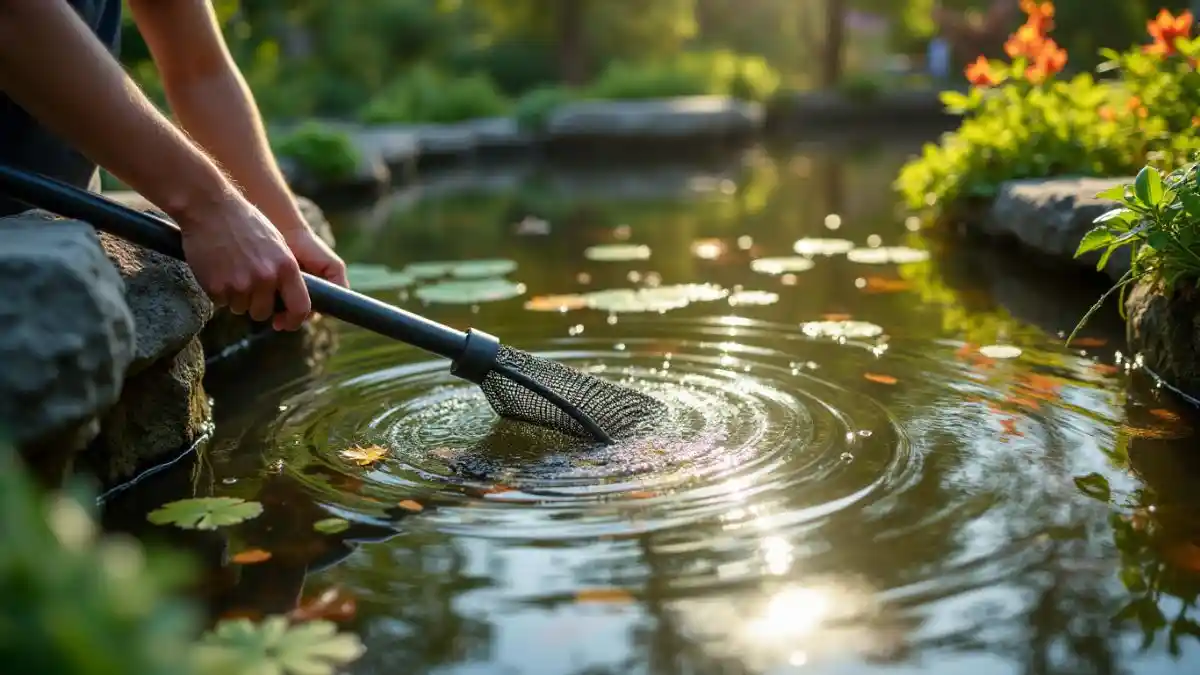
Keeping your pond healthy and clean doesn’t have to be difficult. Regular maintenance ensures the water remains clear and supports a thriving ecosystem.
- Water Quality: Test pH and nitrate levels monthly using a pond testing kit. Target a pH range of 6.5 to 8.0.
- Algae Control: Prevent overgrowth with natural treatments like barley straw extract or UV filters.
- Debris Removal: Use a skimmer net to remove leaves, twigs, and other debris that can accumulate.
Seasonal Maintenance Tips:
- Spring: Clean the pond thoroughly and check all equipment.
- Summer: Monitor water levels and top up as needed due to evaporation.
- Fall: Cover the pond with a net to catch falling leaves.
- Winter: Ensure proper aeration to prevent freezing and maintain oxygen levels.
Tools You’ll Need:
- Pond skimmer for removing leaves and debris.
- Water testing kit to monitor quality.
- A small net for cleaning and fish care.
Pro Tip:
Introduce mosquito-eating fish like guppies or goldfish to control pests naturally. Regularly check filters and pumps to ensure they’re functioning efficiently.
Example:
By dedicating 20 minutes a week to basic maintenance, you can keep your pond looking pristine year-round.
Additional Section: Installing a Pond Pump and Filter System
Why Pumps and Filters Are Essential
- Circulation: Keeps water moving to prevent stagnation and algae buildup.
- Improved Water Quality: Removes debris and supports a balanced ecosystem.
Types of Pumps
- Submersible Pumps: Easy to install, ideal for small ponds.
- External Pumps: Best for larger setups with higher flow requirements.
Example:
For a small backyard pond under 500 gallons, a submersible pump with a flow rate of 300-500 GPH is perfect.
Additional Section: Designing a Pond Waterfall
Benefits of Adding a Waterfall
- Enhances the visual appeal and natural beauty of your pond.
- Increases oxygen levels, supporting aquatic life.
- Creates a soothing soundscape that promotes relaxation.
Steps to Build a Pond Waterfall
- Choose the location and plan the flow path.
- Use flat rocks to create cascading steps.
- Install a pump to circulate water to the top of the waterfall.
- Test the flow to ensure even distribution.
Example:
Using slate rocks can help you achieve a layered, natural-looking waterfall that blends into your landscaping.
FAQs About Small Backyard Ponds
1. Can I build a small backyard pond myself?
Absolutely! With proper planning and materials, building a small backyard pond is a manageable DIY project.
2. How much does a small backyard pond cost?
Costs range from $100 to $1,000 depending on size, materials, and additional features like pumps or plants.
3. Do small backyard ponds attract mosquitoes?
Not if you maintain proper water circulation and introduce mosquito-eating fish like guppies or minnows.
4. What are the best fish for small backyard ponds?
Goldfish, guppies, and mosquito fish are great choices as they’re hardy and require minimal care.
5. How deep should a small backyard pond be?
A depth of 18-24 inches is sufficient for most small ponds and supports both plants and small fish.
6. What plants grow best in small backyard ponds?
Water lilies, hornwort, and pickerel weed thrive in small ponds and add beauty and function.
7. How do I prevent algae growth in my pond?
Use floating plants to block sunlight, maintain circulation, and regularly remove debris.
8. Can I add a fountain to my small backyard pond?
Yes, a fountain not only enhances the visual appeal but also improves water circulation.
9. What maintenance does a small backyard pond require?
Regular cleaning, water quality testing, and seasonal adjustments are essential for a healthy pond.
10. How long does it take to build a small backyard pond?
Depending on complexity, a small pond can be built in 1-2 days with proper tools and preparation.
Conclusion
Building a small backyard pond is a rewarding project that brings beauty and tranquility to your outdoor space. By selecting the right location, size, materials, and plants, you’ll create a functional and visually appealing water feature. Adding pumps or a waterfall enhances the experience, while regular maintenance ensures your pond stays healthy and vibrant. Don’t wait—start your small backyard pond today and enjoy the transformation it brings to your home!


